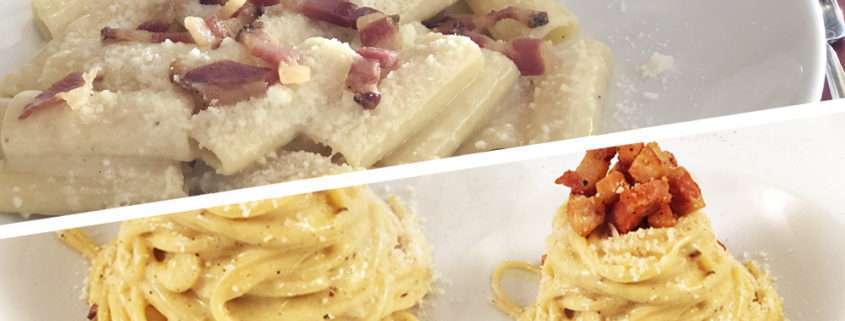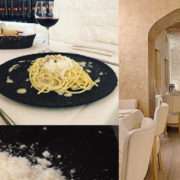If you visit Rome and don’t taste the pasta alla carbonara you can say that you haven’t really been there.
This dish, together with others (like the amatriciana), expresses the Roman culture.
In fact, in Italy you can say that the cuisine represents the culture of the country and to confirm this last statement is a survey carried out by Coldiretti that places it as the top player of food and wine tourism: 23% of foreigners choose it for cooking.
In this article we talk about a dish that, all those who have been Rome, have tasted and loved from the first mouthful: pasta alla carbonara.
Even if it is the main dish of Italian cuisine, its history has been much discussed. It can be said that it is not a 100% Italian recipe but that the “made in Italy” emerges from the ingredients and traditions purely typical.
Deepening this topic we discover together 4 fun facts about pasta alla carbonara:
1) It has uncertain origins
It is said that the pasta alla carbonara was born in 1944 with the arrival of English and American troops on the line between Lazio, Molise and Campania. Soldiers used to make pasta with the ingredients they could find more easily (the eggs and canned bacon they had brought with them). At that time they tasted it and became fond of what can be said to be the ancestor of pasta alla carbonara: the cacio e ova abruzzese to which, for being homesick, they added the typical ingredients of their breakfast.
2) It took the name of pasta alla carbonara from the woodcutters
It is said that the famous dish took its name from the woodcutters of the Apennines who collected wood to make charcoal. They cooked pasta alla carbonara using the ingredients easily available and preserved, the guanciale and eggs. Components that were often carried with them during the periods when they supervised the charcoal pile and were far from home for long periods.
3) Guanciale or pancetta? Parmesan or pecorino?
The official recipe provides as ingredients guanciale for the delicacy and sweetness of the flavor and pecorino because it was the ingredient they produced that was easily preserved and available. Today, parmesan cheese is also used, or a mix of parmesan and pecorino cheese that makes the dish less salty. In any case, the original recipe provides for the use of pecorino from Abruzzo because it is less salty than the Roman one and because it derives from the typical “cacio e ova” in which pecorino was the basic ingredient.
4) Not everyone uses guanciale
Although the real recipe is to use the guanciale exclusively for its consistency, many people opt for the use of smoked pancetta. This choice is induced not only by the economic factor (because pancetta costs less) but also because it is less fat as it is a different cut of meat that is also easier to find. This option is not only widespread in families but also in restaurants, in fact is an example of a famous restaurant in Rome “da Danilo” that serves carbonara with smoked pancetta.
Although there are many variations of this dish, it is important to remember and pass on the authentic recipe of pasta alla carbonara because it represents the history and culinary traditions of Rome.
And how do you prepare it? Are you in favour of tradition, or do you prefer to make changes?
Take a look at our menu to try our alla carbonara and much more!




